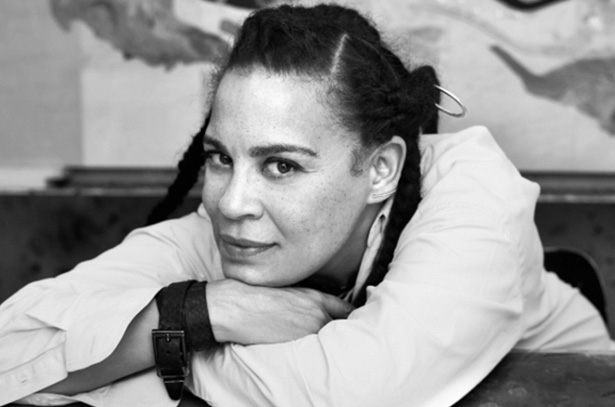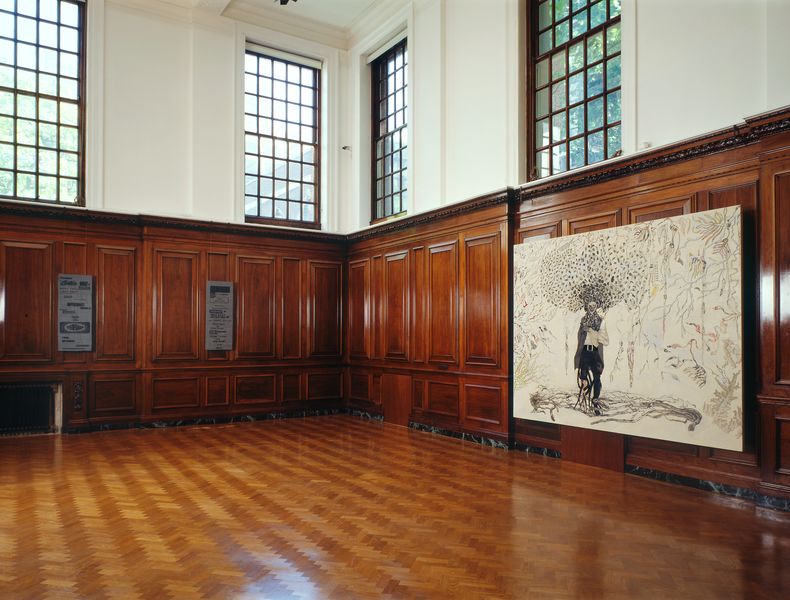
Ellen Gallagher
Salt Eaters
7 June - 22 July 2006
London
Installation views
About the Artist

Ellen Gallagher
Born in Providence, Rhode Island, Ellen Gallagher lives and works between Rotterdam, Netherlands and New York. Gallagher builds multi-layered paintings that pivot between the natural world, mythology and history. Her painting process involves undoing and reforming trains of thought often over long periods of time and across linked bodies of works. Over a highly multifaceted career, Gallagher’s work has been united by what she calls a ‘jitter,’ an intellectual approach in which aesthetic possibilities are shook loose from seismic cracks beneath the surface of cultural entities normally thought to be unshakable and impermeable. Encompassing painting, drawing, collage and celluloid based projections that fuse technique and material into syncretic form, her arresting compositions are a process of recovery and reconstitution through the accumulation and erasure of media, which results in palimpsestic and topographic surfaces.
The subtle textures of her paintings bear witness to a singular process that is materially and conceptually intertwined. Gallagher creates a geographic timeline in which interlocking forms appear to mutate between figuration and abstraction, like agents in a musical composition coming together in an evolving continuum. Gallagher’s work is included in many major international museum collections including MoMA, New York; Albright Knox Art Gallery, Buffalo; The Metropolitan Museum of Art, New York; The Art Institute of Chicago; MCA Chicago; MOCA, Los Angeles; Philadelphia Museum of Art; Whitney Museum of Art, New York; Tate, London; and Centre Pompidou, Paris.
Current Exhibitions
1 / 12












